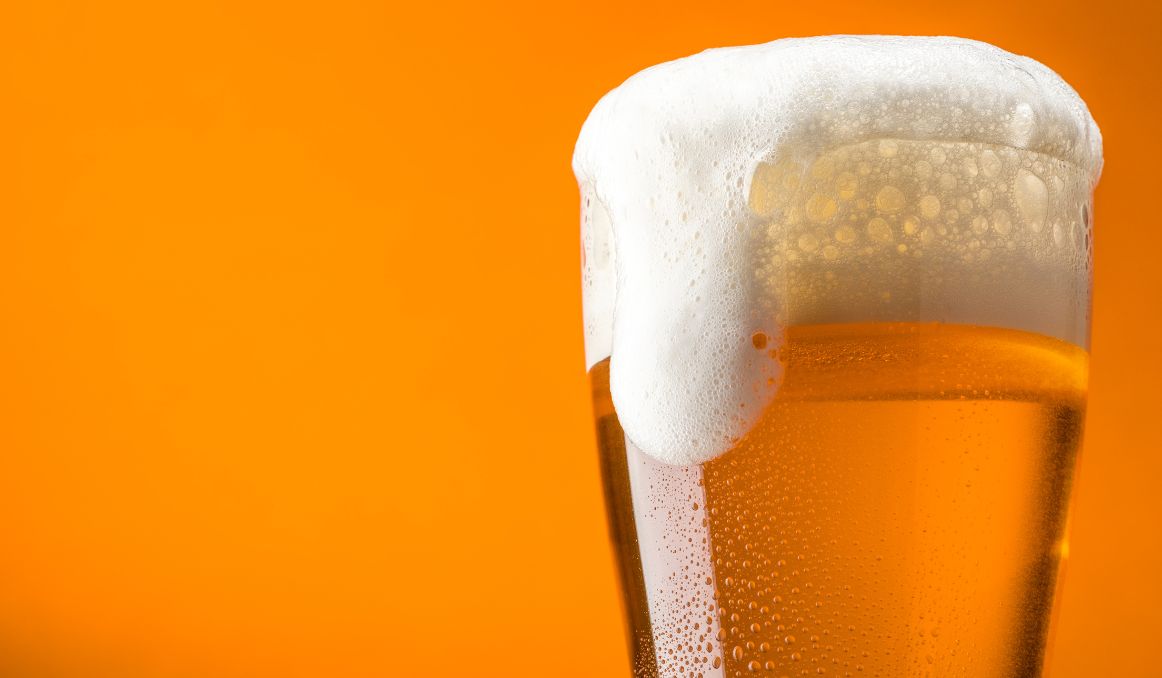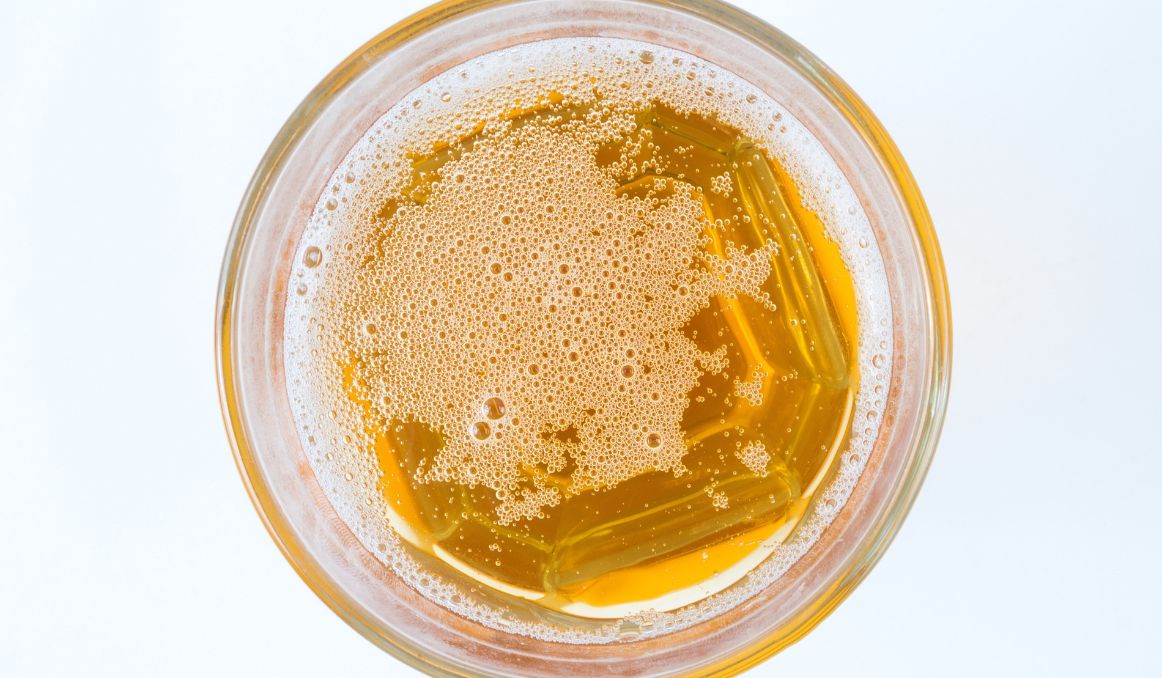Was Beer Always Carbonated?
Carbonation in beer takes many forms, from very low carbonation to super frothy. This variation leads many brewers and drinkers to wonder at the different approaches to carbonation and even to ask, “was beer always carbonated?”
The short answer is yes. The slightly longer answer is yes and no. And the much more drawn-out answer yes, but not like it is today.
What Is Carbonation?

The complexity of the answer to the question of carbonation in beer brings us to ask about the nature of carbonation itself.
Carbonation in foods and beverages comes from carbon dioxide, which is created during fermentation as yeast consumes sugar and converts it to alcohol and carbon dioxide.
For millennia, this was the only way carbonation could be created, and it is actually a waste product of yeast, as the primary purpose of yeast in the consumption of sugar is to create energy.
Yeast requires sugar, oxygen, and a warm, moist environment to thrive. Its only real goal, like most living organisms, is to reproduce and survive so it can continue to reproduce.
Yeast is even able to reproduce asexually, creating a daughter cell from its own cell form. The daughter cell then grows from the mother cell and then detaches once it has reached more than 50% the volume of the mother cell. It then goes on to seek and consume sugar to do more of the same.
Lucky for beer drinkers and everyone who loves a carbonated alcoholic beverage, part of the process of survival for yeast is to expel alcohol and carbon dioxide.
Basic Beer Ingredients
For this reason, beer needs to be sugar rich.
The more sugar, the more alcohol and carbon dioxide. The less sugar, the less alcohol and carbon dioxide.
Thus, the basic beer ingredients have remained the same since the very beginning, and they have always created carbonated beer.
Brewers, who were really just farmers back then, making the most of their crops, learned rather quickly that their beer would perform better if the grains were toasted. Today, we refer to this process as “malting.”
Toasting the cereal grain, whether it is oats, wheat, barley, or any other grain, unlocks an enzymatic process that converts the starches in the grain to sugars.
So all brewers need is this malted grain, which they then steep in hot water to make a sort of grain tea. At this point, brewers could simply wait for local yeast to be attracted to the grain tea, typically referred to as “wort,” and they would technically have beer.
However, because the conversion of those starches to sugars also made for a sweeter beverage, brewers began adding herbs as a bittering agent.
Malted grain, water, and hops is all it took then to make a carbonated, alcoholic beverage.
Early Beer
Of course, carbonation does not like to stay carbonation. Carbonation typically prefers to dissipate into the atmosphere.
That’s why in bread, when yeast is added to the starchy dough, the carbonation created fights to get out and causes the bread to expand, which has given us a lighter, fluffier bread than the previously only unleavened option.
In early beer, carbonation would be created, but it would quickly dissipate as beer was made in open air vessels.
As anyone who drinks carbonated beverages will tell you, once the carbonation is exposed to the air, the beverage goes flat rather quickly. You often cannot count on it for even a few hours.
So those who drank beer straight after it was brewed likely enjoyed a frothy beverage, but once some time had passed, most people would have been drinking flat beer.
Of course, over time brewers began to store beer in airtight containers, allowing for carbonation to last longer.
And once casking, bottling, and kegging came into fashion, you could count on your beer to stay fresh and carbonated until you drank it.
That, however, was only a couple hundred years ago.
Beer and Carbonation Today

Today, brewers have two methods for ensuring not only that beer is carbonated once it is opened, but that is is excessively fizzy as drinkers have come to love that “pfffft” sound when they open their beer.
You can also get access for free to our Complete Beer Carbonation Guide!
Priming
Cask priming, keg priming, and bottle priming, also called conditioning, are all methods brewers use that involve adding a bit of sugar, and sometimes extra yeast, to fermented beer right before bottling, kegging, or casking it.
This priming allows the remaining yeast in the brew, or new yeast introduced, to ferment just a bit more, adding an extra hit of carbonation to the beer. Because this sugar and yeast are diluted with water, the alcohol content does not typically rise as a result of conditioning.
Force Carbonation
Force carbonation is a relatively new approach, and much quicker path, to carbonating beer. Brewers will run their fermented brew though a carbon dioxide line as they are bottling or kegging it, carbonating the liquid on impact.
Purists will argue that this gives a false carbonation that is not “all natural.”
It also requires relatively expensive equipment that may or may not be worth the investment.
Alternatives to Carbonation
Of course, there are alternatives to carbonating your beer, which include, of course, simply bottling your beer as it is, after final fermentation. The result will be a very low carbonated beer that some of those purists may truly enjoy.
Another option is simple cask conditioning, which allows the carbonation to slowly leak out through the barrel.
And finally, nitro beer is beer that is fed through a nitrogen line, rather than a carbon dioxide line, on its way to the bottle or keg.
In any event, it is worth experimenting with all of your options to see which works best for you and your loyal drinkers.
Cheers!
Passionate about the beer and/or wine making process? So are we! If you’re interested in finding out how you can use our technology to control fermentation and monitor your yeast, save work hours and improve the cost-efficiency of your business, drop us a line at [email protected] or check out our product pages:
- Oculyze BB 2.0 (Better Brewing) Yeast Cell Counter App + Hardware
- Oculyze FW (Fermentation Wine) Yeast Cell Counter App + Hardware
Also, you can now get access to a fully functional demo account to test your yeast via our Web App. Completely free of charge and with no commitment to purchase.


